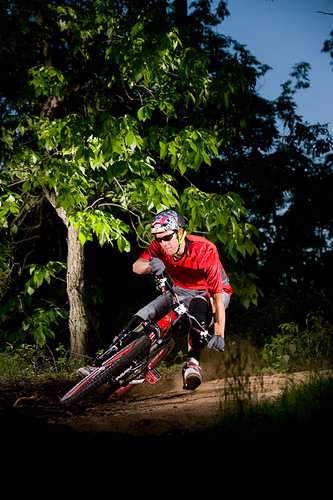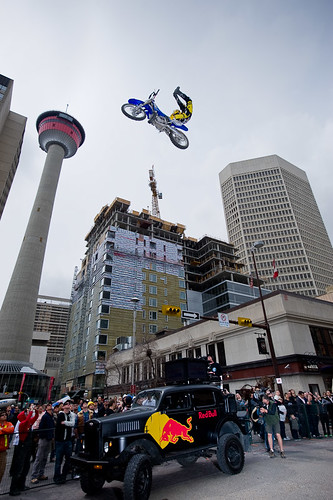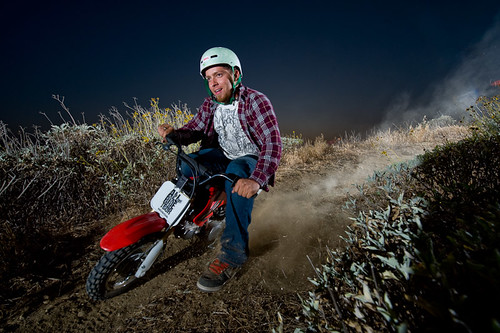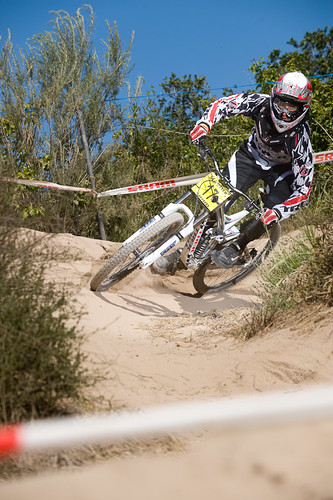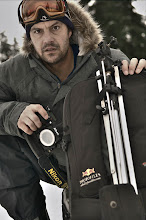I had great intentions of doing a video of this post and I even went out and got a new video camera, but actually getting it filmed has turned out to be a whole different story. So it's been a few weeks and I need to get this post done, and it's not going to be a video for at least a while yet.
I've been shooting at 1/1000th of a second and faster and syncing with flash using the Pocket Wizard Multimax's. It's not hard to do, but you do have to experiment a bit with settings.
The Theory behind it allThe basic premise of it is this: When you press the release the camera opens the shutter and sends a signal to the flash once it is fully open. The key part here is "once it is fully open" that means that at 1/250 the sync signal isn't sent the moment the shutter begins to open, but once it is fully open. This is important to us because with a full frame camera that signal is sent part way through the exposure. And if you set your shutter speed to 1/1000 then the flash will fire somewhere near halfway through your shot. So even if you have a long flash duration, you'll lose a significant part of the frame. What we need to do is to get the flash to fire the moment the shutter begins to open, and keep firing until it closes. The keep firing part is accomplished simply by using a flash (or flashes) with a long duration, longer than your shutter speed. The part about getting the flash to fire before it gets the signal is a little bit trickier. The Pocket Wizard Multimax offers a solution with its delay setting. Basically you set up the camera as a remote with one Multimax in receiver mode and no delay. You set up your flashes with Multimax receivers and set a delay on them so that they fire just before the shutter opens. Now I know some of you are probably thinking, "if you put a delay on the flashes and none on the camera then won't the flash fire after the camera?" and in a perfect world you'd be right. However the camera takes a lot longer to receive the signal and trip than the flash does. Cameras are mechanical and need to do a lot more than a flash does. And when I say a lot longer, I'm talking in 10,000's of a second here. Using another Multimax as a transmitter you fire the camera and the flashes, pretty simple really.
The new Pocket Wizard Flex TT5 with Hypersync should be able to eliminate having to use a separate Transmitter to fire the camera and the flashes. Just set the delay on the TT5 on the camera hotshoe and press the shutter release. The Transmitter knows when the camera is going to fire before it happens, and it can pretrigger the flashes. Same effect, different execution.
Setting it upI'm going to assume at this point that if you're going to try this you know how to set your camera up as a remote so I won't tell you how to do this now. You can set the camera Multimax to whichever channel and zone you want, as long as it's above 16.
Next you need to set up your flash. Connect the sync cord to the flash from either of the Pocket Wizard ports, I frequently use both of them and put two flashes on the same receiver. Just make sure that when you set the delay you set it for both the ports. You do this by choosing
menu:a:a:a that will set up Port 1 and Port 2. If you just want to use Port 2 (the flash port) you enter
menu:a:a:bThe menu should now say "SET DELAY" and you should have some numbers at the bottom in the format 0.0000 To start with you want them to say something close to 0.0420sec, you adjust them using the ABCD buttons and the up/down arrows. This number will be different for every camera and flash combination but at least for the Nikon cameras I've found that this is a good starting point. Once you're done there hit
menu again to return to the main screen, which should now say
DELAY: 0.0420 above the zone letters. Don't forget this part.
Now all you need to do is set your flashes to full power and your camera to 1/1000 and do some tests.
Testing the setupThis is the most important and time consuming part of the whole deal. Once you have set a delay on the flashes and the camera is ready to go you need to confirm that the delay is correct. It probably won't be in the beginning, and you'll need to go back and adjust it. I find it easiest to put the camera on a tripod for this and point it at something reasonably close that fills the frame (5-10 feet is good) Then you need to point your flash at the same object and using the Multimax transmitter fire the camera and the flash. (doing this in a darkish place definitely helps) If everything is setup correctly you should hear the camera fire and see the flash fire. Then take a look at your image. Is there any flash in the shot at all? Is it lighting up all of the image or only part of it? If it's perfectly lit from top to bottom you're very lucky. Write down all the settings in your notebook. It probably won't be perfectly lit this first time and you'll have to play around a little. If there is no flash in the frame at all and you saw the flash fire then set your shutter speed down to around 1/250 and try again. If there is still nothing, go lower until you see the flash in the frame, if you get to 1 second and there is still nothing then you probably need to adjust your delay a fair bit until the flash shows up. Once you have the flash in the frame you can fine tune the delay. This is accomplished by trial and error, adjust your shutter speed to where you want it, then adjust the flash delay by one or two 10,000 in either direction and observe the results. Then go the other way and see how it changes. You should be able to move the flash in and out of the top and bottom of the frame. Remember that after adjusting the delay you need to press menu to exit to the main screen before shooting an image. Write down everything that you think works for you, including the Camera, shutter speed, flash type, flash power, and delay.
ProblemsYou may notice a whole bunch of different problems that come up with different cameras. Little things like sometimes you'll take 5 photos in a row and they'll all have slightly different amounts of shutter showing. Remember that if your shutter speed is 1/1000 then 1/10 of your frame is 1/10,000 of a second, and most camera shutters aren't that accurate so things like this happen. The only real solution is to play around a little more and use a flash with the longest duration possible.
If you end up doing this and have any other input please let me know!


